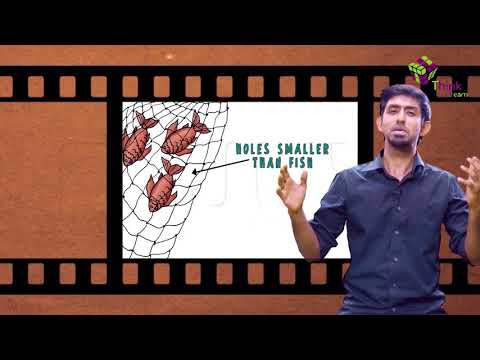What is Sieving?
Sieving is a separation technique based on the difference in particle size. The sieve is responsible for retaining the larger particles.
On top of size, other factors play a role in determining whether a particle will pass through the sieve or not; format of the particle whether the particle will fall where there is an opening or on the mesh of the sieve and surface humidity.
Sieving Meaning
Most of the things that we come across in our day-to-day life exist as a mixture of two or more pure substances. We need to separate these pure substances from the mixture in order to use them individually. For example, you must have noticed that we don’t use the flour bought from the vendors directly for cooking chapatti. We use certain separation techniques in order to separate the flour from the impurities attached to it.
We generally use sieve plates for the separation of flour from the bran particles or other impurities. These sieve plates allow the fine flour particles to pass through the holes of the sieve plate while the bigger impurities are unable to pass through it and remain on the sieve. This method of separation of particles from a mixture based on the difference in size of particles is known as sieving. It uses sieve plates for separation of coarse particles from finer particles.

Sieve plates have meshed or perforated bottoms which allow only particles of a specific size to pass through it. The size of mesh can vary from one place to another depending upon its application. For example, sieving is also used for separation of husk and stone from wheat. Here we use sieve plates having a greater mesh size in comparison to the one used for separation of flour.
Recommended Videos

Advantages of Sieving
- Sieving is a traditional and a very easy method of separation since it doesn’t require much of your skills.
- It is a cheap method as the installation cost is very low.
- It takes lesser time in comparison to other methods of separation.
Disadvantages of Sieving
- It cannot separate two substances in a mixture which have the same size. For example, it cannot separate a mixture of chalk powder from flour.
- Several factors have been identified to influence the operation of this unit, including the size and shape of particles relative to the sieve aperture, the mesh size of the sieve itself, the amount of material on the surface of the sieve, the direction of movement of the sieve, the rate of material movement, etc.
Frequently Asked Questions – FAQs
What is sieving and where it is used?
Sieving is a method of using a sieve to distinguish small particles from bigger particles. It is used in flour mills or building sites. Impurities such as husks and stones are extracted from wheat at flour mill. They remove pebbles and stones from sand through sieving.
What is sieving used for?
Sieving is a simple method of separating particles of varying sizes. A sieve like used to sift meal has very small holes. Coarse particles are separated or broken up by grinding against each other and the openings on the screen.
What is the principle of sieving?
The sample is subjected to horizontal or vertical motion during sieving according to the method chosen. This causes a relative movement between the particles and the sieve; the individual particles either pass through the sieve mesh, or are retained on the sieve surface depending on their size.
What is the benefits of Sieving?
The benefits of the sieve technique include simple handling, low cost of operation, accurate and reproducible tests in comparatively short time and the probability of separating the fractions of particle size. This method is therefore an accepted alternative to methods of analysing using laser light or image processing.
Where do we use sieving?
Sieving is a method of using a sieve to distinguish small particles from bigger particles. It is used in flour mills or building sites. Impurities such as husks and stones are extracted from wheat at flour mill. They remove pebbles and stones from sand by sieving.
To learn more about sieving and other separation techniques download BYJU’S – the learning app.

WHAT ARE THE MODERN PRACTICES OF SIEVING ?
Modern practices of sieving include vibrational sieving, wet sieving, horizontal sieving, and tap sieving.
What is sieving
Sieving is defined as a method of separating two or more components of different sizes from a mixture based on the difference in their sizes. Therefore, it can not distinguish two substances that are of the same size in a mixture. You can’t distinguish a mixture of chalk powder from flour.